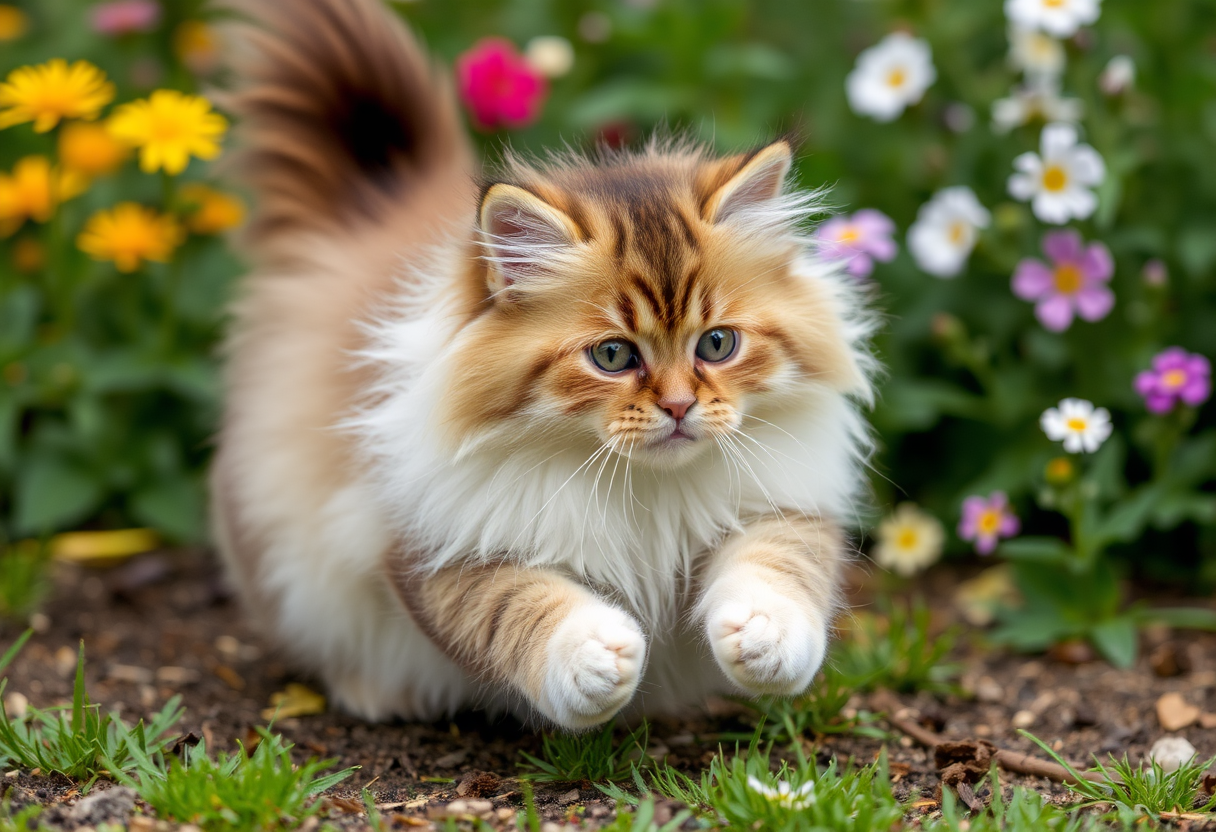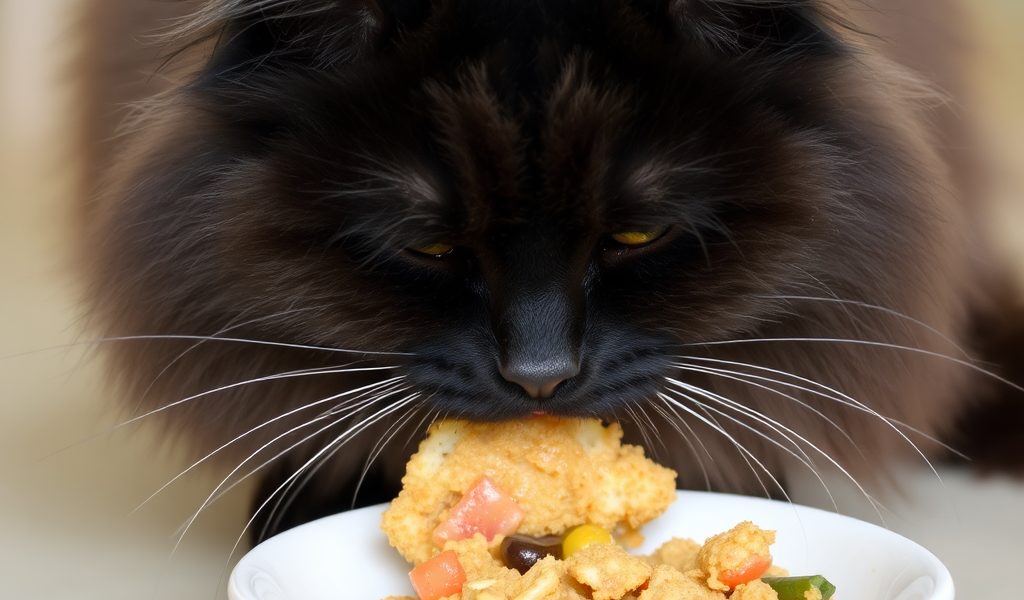As a devoted cat owner, you want nothing but the best for your furry companion, and that begins with their diet. Crafting a balanced diet for your feline friend is crucial for their overall health, energy levels, and long-term well-being. Yet, with an overwhelming array of food options available today, it can be challenging to determine what truly constitutes a nutritious meal for your cat. In this ultimate guide, we’ll delve into the essential components of feline nutrition, including the right balance of proteins, fats, and carbohydrates, as well as understanding the importance of hydration and essential vitamins. Whether you’re looking to switch your cat to a new diet, or simply want to ensure they’re getting the best possible nutrition from their current food, this comprehensive resource will equip you with the knowledge and confidence to make informed choices for your beloved pet’s health and happiness. Join us as we explore tips, recipes, and expert advice to help you create a balanced diet that will keep your cat purring with satisfaction!

1. Understanding Feline Nutrition Basics
Crafting a balanced diet for your feline friend begins with understanding the foundational principles of feline nutrition.Cats are obligate carnivores and carnivorous in the truest sense since they belong to the Felidae family and mainly feed on animal type protein. This characteristic is crucial to consider when selecting food for your kitty, as their bodies have evolved to rely on nutrients found in meat.
A well-rounded feline diet should include a variety of protein sources, such as chicken, turkey, fish, and beef, ensuring that your cat receives essential amino acids like taurine—vital for heart function, vision, and reproductive health. Additionally, cats require fats for energy and to support healthy skin and fur. Look for cat foods that include omega-3 and omega-6 fatty acids, which can be found in fish oil or flaxseed.
While protein and fat are paramount, carbohydrates should be present in smaller amounts. Cats have limited ability to digest carbs, so it’s important to choose high-quality cat foods that use grains and vegetables sparingly. Fiber, on the other hand, is beneficial for digestive health, helping to prevent hairballs and constipation.
Don’t forget about the importance of hydration! Cats often have a low thirst drive, so providing wet food can help maintain proper hydration levels, especially if they are not fond of drinking water. A proper balance of nutrients, along with attention to hydration, ensures your feline friend stays healthy and vibrant.
Understanding these nutritional basics will empower you to make informed decisions when it comes to your cat’s diet. Whether you choose to feed commercial cat food or prepare homemade meals, always consult with your veterinarian to ensure that your furry companion’s nutritional needs are met effectively. With the right knowledge in hand, you’ll be well on your way to crafting a balanced diet that keeps your feline friend happy and healthy for years to come.
2. The Importance of Protein, Fats, and Carbohydrates
When it comes to crafting a balanced diet for your feline friend, understanding the role of protein, fats, and carbohydrates is essential to ensuring their health and well-being. Cats are obligate carnivores, which means that their bodies are designed to thrive on a diet high in protein. This nutrient is crucial for maintaining muscle mass, supporting immune function, and promoting healthy organ function. High-quality sources of protein, such as chicken, turkey, and fish, should form the foundation of your cat’s diet, providing the amino acids necessary for their overall health.
In addition to protein, fats are another vital component of your cat’s diet. Healthy fats serve as a concentrated source of energy, aiding in the absorption of fat-soluble vitamins. They also contribute to a lustrous coat and healthy skin, while supporting overall cellular health. When selecting fat sources, look for options like fish oil or chicken fat, which not only provide energy but also contain essential fatty acids like omega-3 and omega-6.
While cats require fewer carbohydrates than humans, it’s important to include some digestible carbs to provide energy and promote digestive health. Whole grains, vegetables, and fruits can serve as beneficial additions to your cat’s diet, offering fiber and essential nutrients. However, be cautious with the quantity, as too many carbs can lead to obesity and other health issues.
By striking the right balance of protein, fats, and carbohydrates in your cat’s diet, you can help ensure they lead a healthy, active life full of vitality. Always consult with your veterinarian when making significant changes to your cat’s diet to tailor the nutrition to their specific needs.

3. Essential Vitamins and Minerals for Cats
When it comes to crafting a balanced diet for your feline friend, understanding the essential vitamins and minerals that support their health is paramount. Cats, being obligate carnivores, have specific nutritional requirements that differ significantly from those of humans. Ensuring that their diet is rich in essential nutrients can lead to a longer, healthier life, full of playful energy and vitality.
Vitamin A is crucial for your cat’s vision, immune function, and skin health. Unlike humans, cats cannot convert beta-carotene (found in vegetables) into vitamin A, so it’s vital to include animal-based sources in their diet, such as liver or fish.
B vitamins, including B1 (thiamine), B2 (riboflavin), B3 (niacin), B6 (pyridoxine), and B12 (cobalamin), play integral roles in energy metabolism and neurological function. These vitamins can be sourced from meat, fish, and eggs, ensuring your cat receives the energy they need to thrive.
Vitamin D is another essential nutrient that aids in calcium absorption and bone health. While cats can synthesize vitamin D from sunlight, it’s often insufficient, so incorporating fatty fish like salmon or fortified foods can help meet their needs.
Vitamin E, an antioxidant, protects cells from damage and supports immune function. It can be found in animal fats and certain oils, making it important to include in your cat’s diet.
Minerals are equally important in maintaining your cat’s health.Calcium and phosphorus work in synergy to enhance and strengthen bones and teeth. A proper balance between these two is crucial, as an imbalance can lead to health issues. They can be sourced from meat and bone meal.
Potassium is vital for muscle function and heart health, while magnesium supports metabolic processes and enzyme functions. Both minerals can be found in meat, fish, and whole grains, ensuring your cat receives a well-rounded diet.
Lastly, taurine, an amino acid, is essential for heart function, vision, and reproduction. Cats cannot produce enough taurine on their own, so it’s imperative to include meat sources rich in this nutrient, such as poultry and fish.
By ensuring that these essential vitamins and minerals are part of your cat’s diet, you can help promote their overall health, well-being, and longevity. Remember to consult with a veterinarian or a pet nutritionist when designing a diet plan to ensure that your feline friend’s needs are fully met and that they remain happy and healthy for years to come.
Want to ensure your cat stays healthy for years to come? Discover the importance of regular vet visits.
4. Hydration: Keeping Your Cat Well-Watered
Hydration is a crucial aspect of your cat’s overall health and well-being, yet it often goes overlooked in the quest for a balanced diet. Unlike dogs, cats are not naturally inclined to drink large amounts of water, which can lead to dehydration and urinary tract issues if left unaddressed. To ensure your feline friend stays well-watered, it’s essential to understand their unique hydration needs and how to encourage them to drink more.
First, consider the type of food you’re providing. While dry kibble is convenient, it contains very little moisture—typically around 10%—which can contribute to dehydration. To counter this, you might want to incorporate wet food into their diet, which typically contains 70-80% water. This not only increases their fluid intake but also adds flavor and variety to their meals. Look for high-quality wet food that lists meat as the primary ingredient, ensuring your cat gets the nutrients they need while staying hydrated.
However, food alone may not suffice. You can encourage your cat to drink more water by providing fresh, clean water in a bowl or a pet water fountain. Cats are instinctively attracted to running water; thus, a fountain can entice them to hydrate more frequently. Remember to replace the water on a daily basis to maintain the level of freshness and attractiveness. Additionally, placing multiple water sources around your home can help kittens drink more often, especially if they tend to gravitate toward certain areas.
Another way to boost hydration is by adding water or broth to their dry kibble. This simple trick can make their meals more enticing while ensuring they consume additional fluids. Just make sure any broth is low in sodium and free of onion or garlic, which can be toxic to cats.
Lastly, keep an eye on your cat’s hydration levels. Signs of dehydration include lethargy, dry gums, and a decrease in skin elasticity. If you notice these symptoms, it’s essential to consult your veterinarian to address any underlying health concerns. By prioritizing hydration in your cat’s diet, you’ll not only enhance their quality of life but also help prevent potential health issues down the road.Always bear in mind, when a cat has proper hydration, such a cat is sure to be happy and healthy.

5. Tips for Transitioning to a New Diet
Transitioning your feline friend to a new diet can be a delicate process, but with the right approach, it can be done smoothly and effectively. Cats are creatures of habit, and sudden changes can lead to digestive upset or refusal to eat. Here are some essential tips to ensure a successful transition to a balanced diet that keeps your kitty healthy and happy.
1. Gradual Introduction: Start by mixing a small amount of the new food with your cat’s current food. A good rule of thumb is to begin with about 25% of the new food combined with 75% of the old.Increasing the new food while simultaneously cutting down on the old food is implemented in 7-10 days. Such gradual changes give time for your cat’s digestive system to adjust.
2. Monitor Reactions: Pay close attention to how your cat reacts to the new food. Examine for any signs of gastrointestinal distress, including abnormal vomiting and diarrhea. If you notice any adverse reactions, slow down the transition and give your cat’s stomach more time to adjust before proceeding.
3. Create a Positive Environment: Make mealtime a pleasant experience by providing a calm and familiar setting. Consider feeding your cat in a quiet area where they feel secure.You might also try warming the new food slightly, as the aroma can entice your cat to eat .
4. Mix It Up: Cats can be finicky eaters, so offering a variety of textures and flavors can help. If you’re transitioning from dry to wet food (or vice versa), consider having a combination of both during the transition period. This can also keep mealtime interesting and engaging for your feline companion.
5. Be Patient: Patience is key in this process. Every cat is different; some may take to the new food immediately, while others may take longer to accept the change. Avoid forcing your cat to eat the new food, as this can lead to stress and further resistance.
6. Consult Your Vet: If you’re unsure about the best diet for your cat or how to transition them effectively, consult your veterinarian. They can provide personalized recommendations based on your cat’s health, age, and any dietary requirements.
By following these tips, you can help your cat transition to a new diet with ease, ensuring that they receive the balanced nutrition they need for a healthy and vibrant life. Remember, the goal is to make this process as stress-free as possible, for both you and your furry friend!
6. Homemade Cat Food Recipes and Considerations
Creating homemade cat food can be an enriching experience for both you and your feline friend, allowing you to have complete control over the ingredients and ensuring a wholesome diet. However, it’s vital to approach this task with careful consideration to maintain your cat’s health and well-being. Cats are obligate carnivores, meaning their diets must be primarily meat-based; hence, it’s crucial to include high-quality protein sources in every recipe.
When crafting your homemade cat food, start with lean meats such as chicken, turkey, or fish. These proteins not only provide essential amino acids but also contribute to strong muscle development and overall health. It’s advisable to cook the meat thoroughly while avoiding any seasonings, as many spices can be harmful to cats.
Adding organ meats, like liver, offers a nutrient-rich boost, delivering vitamins A and B, as well as essential fatty acids. Balance is key, so consider incorporating a small amount of cooked vegetables—like carrots or peas—which can provide fiber and vitamins, but remember to keep these minimal, as cats have a limited ability to digest plant matter.
Don’t forget to include taurine, an essential amino acid that supports your cat’s heart health and vision, often found in meat. If you’re unsure about balancing nutrients, consult with a veterinarian or a pet nutritionist before fully transitioning to homemade meals. Additionally, be cautious with supplements; while some may be beneficial, others can be toxic or unnecessary.
In this section, for beginning families, you are provided with two simple recipes :
1. Chicken and Rice Delight:
– Ingredients: 1 cup cooked chicken (shredded), 1/4 cup cooked brown rice, 1/4 cup pureed carrots, and a supplement of taurine (as directed by your vet).
– Instructions: Mix all ingredients thoroughly and store in the refrigerator for up to 5 days.
2. Fish Feast:
– Ingredients: 1 cup canned salmon (in water), 1/4 cup cooked sweet potato, and a pinch of fish oil for added omega-3 fatty acids.
– Instructions: Blend ingredients until well mixed, and serve fresh or refrigerate for future meals.
Not sure which diet works for your furry friend? Pair this with our guide on spotting health issues early.
As you embark on this culinary journey, remember to introduce any new diet gradually to avoid digestive upset. Monitor your cat for any adverse reactions and be open to adjusting the recipes according to their preferences and dietary needs. With some creativity and a bit of research, you can provide a delicious and balanced diet that keeps your furry companion happy and healthy!
In conclusion, ensuring your feline friend enjoys a balanced diet is essential for their health, happiness, and longevity. By following the tips and insights provided in our ultimate guide, you can create a tailored nutritional plan that honors your cat’s unique needs and preferences. Remember, just like us, our pets thrive when they receive a well-rounded diet that includes quality proteins, essential vitamins, and minerals. With Pookietales by your side, you can confidently explore a variety of meal options and snack ideas that will keep your furry companion thriving. If you have any questions or wish to share your own experiences, we’d love to hear from you! Together, let’s embark on this journey of feline nutrition and ensure our cats live their happiest, healthiest lives.


